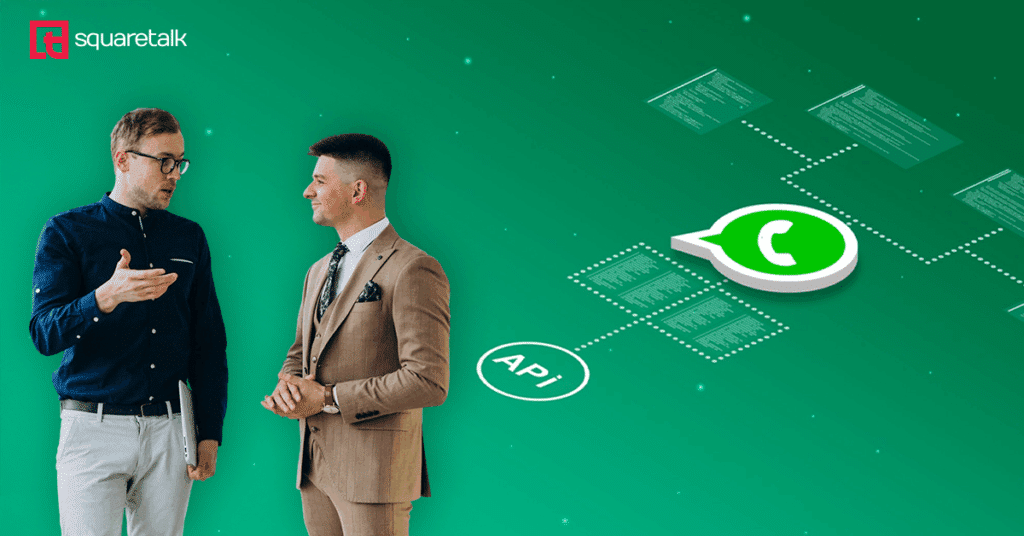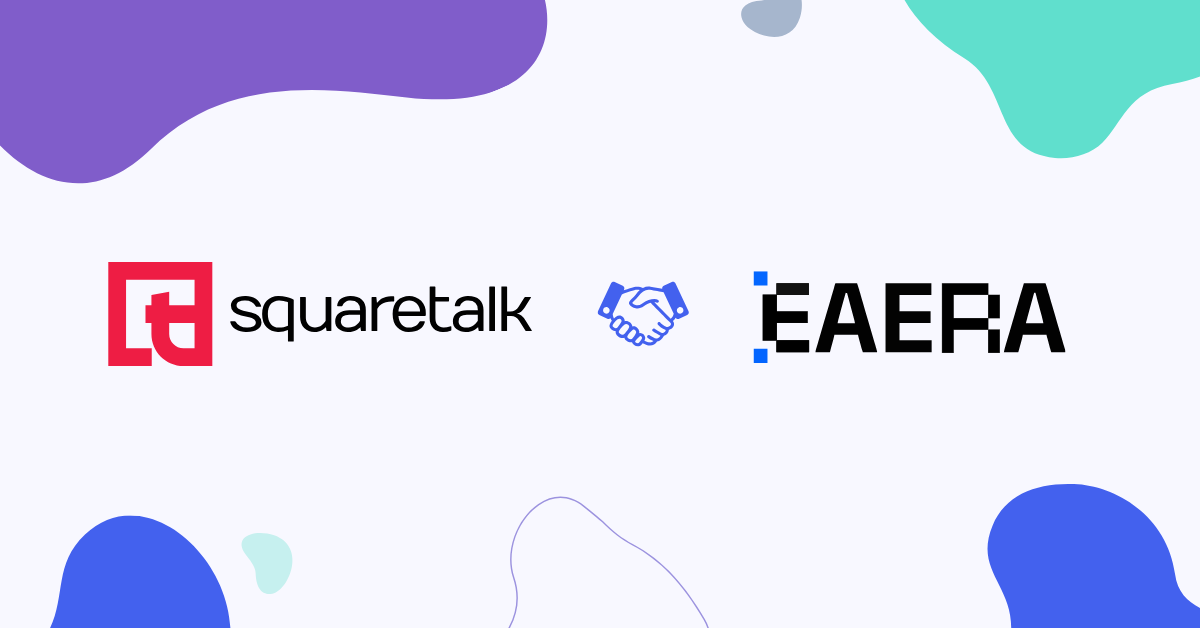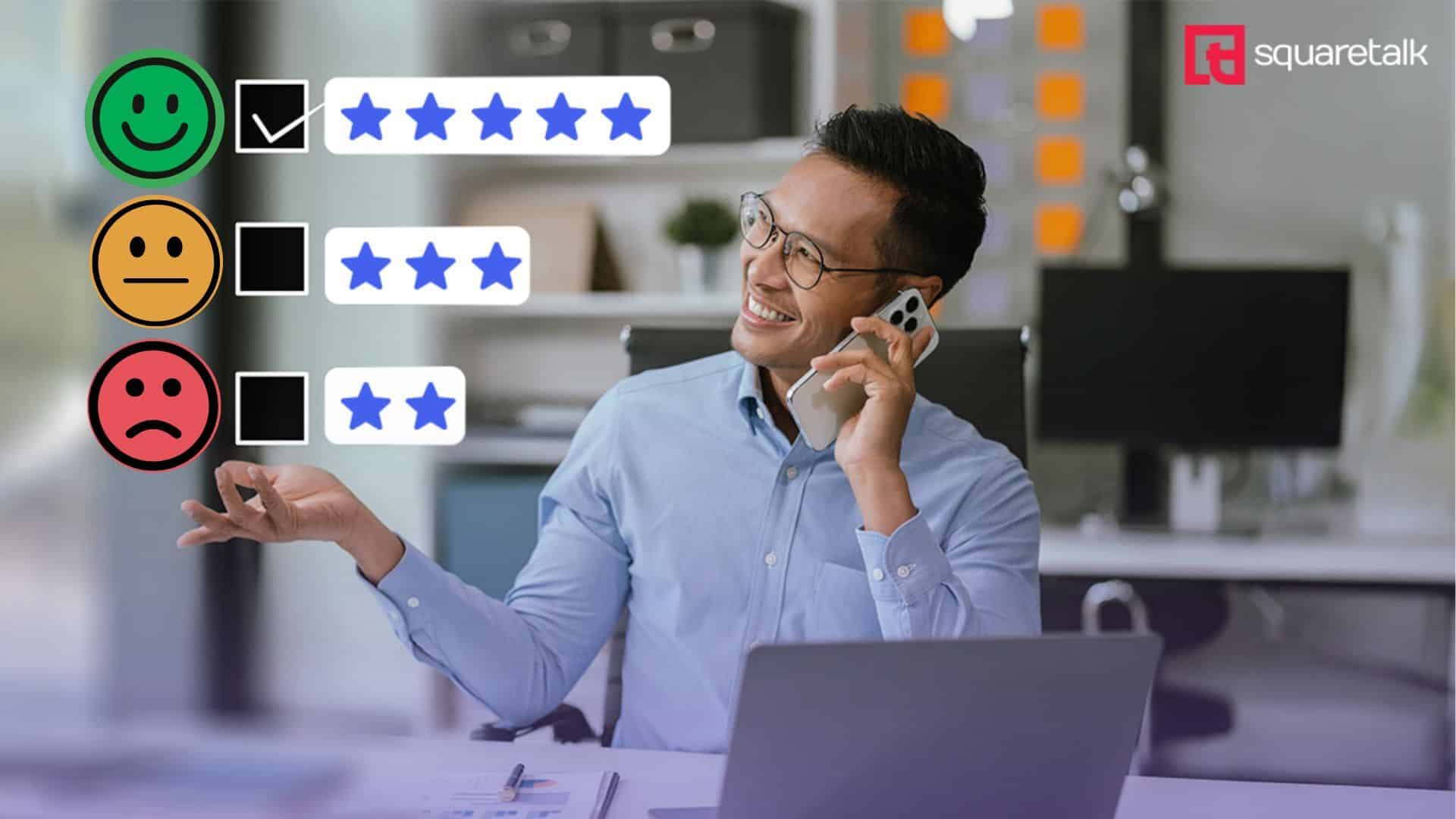With over 3 billion users worldwide, WhatsApp has become a powerful channel for marketing, sales, and community building.
It opens the door for brands to create immersive, personalized customer journeys and meet client demand in creative ways beyond traditional customer support.
Wondering how to leverage this channel for your business? Below, we explore four innovative ways you can use the WhatsApp API to drive revenue, build loyalty, and create memorable customer experiences at scale.
Let’s dive in!
Benefits of Using WhatsApp Business API
Before exploring the different use cases, it’s important to discuss how the WhatsApp Business API turns everyday conversations into measurable growth for your brand :
- Higher Engagement : As one of the most popular communication platforms, WhatsApp has impressive statistics, including a 98% Open Rate, а 45s Average Response Time from recipients, and 19% Average Click-Through rate.
- Faster Sales and Resolutions : The immediate nature of the communication, embedded buttons, and rich-media files speed up buying decisions and facilitate support interactions. Statistics show that companies using WhatsApp for business messaging see a 99.4% reduction in time to complete an order.
- Personalization at Scale : Dynamic variables and audience segmentation ensure messages remain relevant for each recipient, while still allowing you to automate and scale outreach or support.
- Compliance and Brand Trust : Meta takes customer safety and SPAM protection very seriously and implements many protective measures, including end-to-end encryption, verified business profiles, pre-approved templates for outreach, and explicit opt-ins. These features ensure recipients interact with a legitimate company profile, build trust, and protect your brand reputation.
Not sure about the difference between WhatsApp, WhatsApp Business, and WhatsApp Business API? This blog explains it all.
4 Real-Life WhatsApp API Use Cases for Brands
Many businesses worldwide are pushing the boundaries of WhatsApp API, using it to turn conversations into high-value moments that drive revenue, improve engagement, and strengthen loyalty on scale, all while maintaining the human touch.
1. Personalized Marketing & Promotions
Traditional, generic blasts feel impersonal. On WhatsApp, marketing can feel like a one-to-one conversation, transforming the channel from a broadcast billboard into a personal shopping assistant.
Statistics show that 72% of users are more likely to engage with personalized WhatsApp messages. You can use individual preferences, purchase history, and browsing behavior to send curated recommendations, exclusive offers, and timely suggestions.
Why This Works
- It’s intimate : On WhatsApp, users talk to family, friends, and close contacts. When brands earn permission to enter this space and then demonstrate they understand the customer, it makes offers feel like tips from a trusted source.
- It’s relevant : Messages reflect the specific customer’s behavior, history, and interests, which increases the chances of them taking advantage of the promotion.
- It’s more impactful : WhatsApp’s rich media capabilities allow you to showcase products through images, videos, and catalogs in an engaging, dynamic, and mobile-first format.
- It’s conversational : Customers can ask follow-up questions, get instant clarification, and complete transactions without leaving the chat, which speeds up the buying process.
Real-Life Examples of Out-of-the-Box Promotions via WhatsApp
- In 2013, Absolut Vodka ran a WhatsApp campaign for an exclusive launch party in Argentina. The company created Sven, a stoic but witty virtual doorman, with whom people had to interact to win tickets. In three days, 600 contacts sent over 1000 photos, text messages, videos, and audio files, and each one got a personalized response from Sven.
- In 2014, Hellmann’s “WhatsCook” campaign in Brazil connected chefs with customers who registered on a dedicated website for one-on-one advice and guidance. They prepared meals together with whatever items people had on hand, while subtly featuring Hellmann’s products. The participants exchanged step-by-step text messages, photos of ingredients and finished dishes, short how-to video clips, quick voice notes for technique and timing, and links for full recipes. The experience felt more like interacting with a helpful assistant than a hard sell, and it sparked strong engagement, online buzz, and earned PR.
- In 2023, Domino’s Pizza Indonesia sent daily promotions on WhatsApp to customers who had ordered in-store, segmented by CRM data (frequency and location), to drive more traffic to the mobile app. The campaign resulted in a 72% increase in sales compared to the previous year, attributed to WhatsApp marketing efforts, and a 6.3x ROI from WhatsApp messages.
How to Make Your WhatsApp Offers Irresistible
- Segment the audience : Use your CRM data to create meaningful customer sections based on factors like past purchases, browsing behavior, and location, and tailor the offer accordingly. A new customer will respond to different messaging than a VIP who shops monthly.
- Make the offers feel personal : Even when using automation, craft messages that sound helpful, not pushy. Use the customer’s first name, reference similar products they’ve bought, or give discount codes for services they’ve looked at on your website.
- Ask for the customer’s preferences : Let them choose which promotions they want to hear about (e.g., new arrivals, flash sales, exclusive previews) and how often. This reduces opt-outs and ensures your messages are welcomed (and opened more).
- Time the promotions right : Use behavioral triggers rather than generic scheduling. For example, suggest complementary products a week after a purchase when the customer has received and already tried the item, instead of immediately after delivery.
- Use two-way conversation : Ask 3-5 questions to identify the customer’s needs or preferences, then suggest a set of relevant products with images and quick-reply buttons. If you use chatbots, create automation flows with FAQs and proper ways to handle inquiries that naturally arise from promotional messages.
Compliance Considerations for Personalized Marketing & Promotions
- Send these types of messages only to marketing-opted users.
- Clearly identify the messages as promotional, with simple, jargon-free language.
- Establish appropriate sending windows (typically 9 AM – 8 PM in the recipient’s timezone) and respect them.
- Set up maximum message frequency for campaigns or customer segments to avoid frustration and lower the risk of your phone numbers getting blocked.
- Be transparent about data usage in your privacy policy when utilizing purchase history, browsing behavior, or location data to personalize messages.
2. Transactional & Proactive Notifications
Turn “boring updates” (order confirmations, shipping updates, appointment reminders, payment receipts, etc.) from functional communication into upseel and cross-sell micro-moments without being pushy, deliver delight or proactive value.
Notifications can also be an exciting way to show your brand’s personality, build anticipation, and add helpful context. On WhatsApp, you can follow a Utility template with a Marketing one to add context and rich-media files to amp up the creativity.
It’s important to note that Squaretalk doesn’t recommend stuffing Utility templates with Marketing content or reaching out to recipients who haven’t opted in to receive Utility and/or Marketing messages from your business. This is non-compliant, erodes customer trust, and might lead to sanctions. The correct way is to :
- First send a Utility template (e.g., “Your delivery is Tue 10–12.” with options to [Change slot] [Change address]), then follow it up with a separate Marketing template (e.g., “Want weekend delivery for only €2 more?” → [Choose weekend]).
- End a Utility template with “View options” or “Reply for more”. When the user messages you back, you’re inside the 24-hour window and can send free-form replies and files in a compliant way.
- After the operational event mentioned in the Utility template is done (e.g., the product is delivered), send a Marketing template with accessories/reorder/extended warranty/etc. only to marketing opt-in recipients.
As a rule, Meta considers and bills templates with mixed content as Marketing, so keep that in mind when planning your campaigns.
Why This Strategy Works
Notifications have a huge psychological advantage over other messages: customers expect them, actively want them, and often, open them instantly. This creates a permission window where engagement is naturally high and people are more receptive to complementary suggestions, loyalty program reminders, or helpful tips. This makes notifications a perfect opportunity to build trust or add value. With the right timing and messaging, a shipping update can double as a sales touchpoint.
Well-Performing Updates and Proactive Message Examples
- Amazon India proactively sends a delivery-day WhatsApp message that includes a “Pay Now” option so the customer can pre-pay digitally from that notification, turning a boring update into a transactional micro-moment. This reduces failed deliveries and cash handling, and allows the recipients to complete payment with one action embedded in a proactive message.
- A global beauty brand located in Paris sent replenishment reminders via WhatsApp to customers who had spent over $150 in the last 45 days and increased repurchase rates by 30%.
- In 2022, Uber India started sending order confirmations via WhatsApp. After ordering a ride in the chat, the company would send detailed information about the route, pick-up and drop-off addresses, destination route, fare amount, driver’s name, phone number, and license plate, but also include a Help button and phone in case of emergencies. The link is active 30 minutes after the trip ends and provides a level of security and trust for Uber’s customers.
How to Craft Effective Notifications on WhatsApp
Map your customers’ micro-journeys : For each step, ask yourself: “What’s the job to be done? What action should/do I want the customer to take after receiving this message?” Implement the answers into your flow. It’s important not to overcrowd the customers, so send one message per milestone and bundle when possible. To make the most of the momentum, design messages to inspire action instead of only reading.
Add value at every stage : Turn each notification or update into a micro-moment of customer education or excitement-building. Provide estimated delivery windows and track order buttons, care instructions for products, style suggestions, assembly videos, and “how-to” PDF guides. A proactive flight update could be easily paired with options to upgrade seats or add luggage with one tap.
Suggest complementary products : When sending a shipping update, offer a relevant add-on. If someone booked a hotel, for example, the confirmation can offer restaurant recommendations or interesting local experiences. The key is keeping the suggestions relevant and timed.
Build anticipation : Use updates for pre-event hype (e.g., “Your concert ticket is confirmed. Want a sneak peek of the setlist?”) or a new product launch. A series of messages counting down the days with behind-the-scenes content or “what to expect” checklists could significantly improve on-the-day engagement.
Other Compliance Considerations for Transactional & Proactive Notifications on WhatsApp
- Make sure your Utility templates have a clear primary purpose that is non-promotional (e.g., reschedule a meeting, confirm delivery, alert of low balance). If you want to include a cross-sell/upsell, deliver it via an optional, non-mandatory Call-to-Action button or a separate Marketing template in the same thread.
- Use quick replies or interactive buttons for standard actions (e.g., Change delivery time, Get more info, View ticket).
- Provide easy opt-out in every thread.
- Maintain strict records of transactional messages you sent, especially for financial services, healthcare, or other regulated industries.
- Update the customer with a message in the same thread (e.g., Flight canceled → Rebook options → New itinerary confirmed).
3. Conversational Commerce
Ever wished you could bottle the experience of a helpful in-store sales associate and deliver it to customers online, but digitally and at scale?
With WhatsApp conversational commerce, you can transform the buying process into an interactive, consultative, and personal conversation.
Statistics show that 83% of people are willing to browse and buy products directly through messaging apps like WhatsApp. With the API, you can design chat flows that naturally guide customers from inquiry to checkout.
Why This Works
Conversational commerce solves friction points (e.g., choice paralysis, specific needs, unanswered questions) by leveraging the natural, back-and-forth nature of WhatsApp. You can provide assistance instantly, address concerns in real-time, and adjust personalized recommendations based on the customer’s feedback.
WhatsApp’s features make this particularly effective :
- A quiz can narrow options in a fast, fun, and engaging way.
- The catalog showcases products with beautiful images, prices, availability, and key features in one view.
- Media sharing allows customers to send photos for personalized advice on the spot.
- Transactions happen easily and securely without app-switching via a secure link or integrated payment tools.
Examples of Interactive Sales Flows
- JioMart simplifies the shopping experience, allowing Indian customers to browse groceries through the store’s entire catalog, add to cart, and pay all within WhatsApp.
- In 2020, Estée Lauder launched a skincare WhatsApp chatbot. Liv, as it’s called, helps its users build and maintain a personal routine, provides daily tips, and directs potential customers to the company’s products where necessary. The campaign built a deeper relationship with the brand, increased awareness, and generated media coverage.
- The Mumbai-based e-commerce retailer Stylesplash uses WhatsApp as a private and secure platform for clothing consultations from style experts, reducing abandoned carts and turning dissatisfied customers into a loyal base. According to the company’s founder, Dhwani Kothari, on WhatsApp, people often share their plans to wear the particular outfit they’re interested in, which makes it easier to suggest add-ons.
Plays to Try
- Integrate with your catalog : Connect your WhatsApp API solution to your e-commerce platform or directly set it up in your Meta Business Account so your agents or automation tools can pull real-time product information.
- Showcase products contextually : Share a few, but relevant options based on the conversation. Include key differentiators and why each might suit the customer’s requests, like “Based on your need for a budget-friendly camera that performs well in low light, these models stand out…”
- “Compare two” or use guided selling flows : Let shoppers evaluate personalized options against each other.
- Encourage visual engagement : Let customers send photos (available space for furniture shopping, skin tone for beauty products, outfit for accessory matching, etc.) to dramatically improve recommendation accuracy.
- Make the experience more interactive : Add quick-reply buttons and carousels to streamline browsing.
- Create urgency without pressure : Avoid aggressive sales tactics. Soft pushes like “I can hold this in your cart for 20 minutes” or “We have 3 left in your size on stock” work better and sound more authentic.
- Live expert moments : Route high-value consultations to specialists with screen-share videos or quick voice notes (where policy permits).
Compliance Considerations for Conversational Commerce
- Always follow consumer protection laws, sensitive customer data regulations (e.g., financial inquiries, loan applications, KYC documents), local privacy regulations in the buyer’s jurisdiction (GDPR, CCPA, etc.), and WhatsApp’s own security requirements.
- If you’re using the WhatsApp Catalog, ensure all products adhere to the WhatsApp Commerce Policy.
- Send the correct WhatsApp template class to kick off conversational commerce. Pre-purchase nudges require a Marketing template (with opt-in), while post-purchase updates and actions should be shared in Utility templates.
- Use only WhatsApp-approved payment integrations or secure payment links.
- Don’t expose sensitive data in-thread. Instead, provide payment confirmations and invoices as downloadable PDFs.
- Ensure any product descriptions, price quotes, availability claims, return policies, and warranties you share are accurate and clearly communicated before purchase.
4. Community Engagement & Loyalty Programs
Beyond marketing and sales, WhatsApp also shines as a tool for community building and loyalty management.
Instead of broadcasting point balances or tier status updates, forward-thinking companies use personalized, meaningful, one-on-one conversations to foster a sense of belonging at scale, provide exclusive access, and cultivate a tribe of faithful customers who feel connected not just to the product but also to the brand.
Why this works
Communities thrive on intimacy, immediacy, and selectivity. WhatsApp as a channel can deliver a high-touch experience that makes customers feel appreciated and recognized. This is a very effective way to move people from transactional loyalty (earn points to redeem rewards) to emotional devotion (feel belonging, receive recognition, and access exclusivity).
Building connections with VIP customers, brand ambassadors, insider circles for product feedback, or interest-based segments encourages repeat business and reduces churn.
Examples of Brands Fostering Connections with Customers via WhatsApp
- Heracles Almelo, a Dutch professional football club, launched a campaign to increase ticket sales and customer engagement. The club delivered hyper-personalized content from its players via WhatsApp, email, and social media. Fans were encouraged to forward the messages to their friends on WhatsApp, which helped the campaign go viral. The results were over 3,000 new opt-ins and a 98% open rate on WhatsApp.
- In 2020, Adidas launched a UK chat hotline for grassroots teams short on players. Selected teams got a surprise appearance from Adidas-sponsored pros wearing the brand’s latest boots. The players turned the games into a live product showcase, improving fans’ connection with the company.
Ways to Build Belonging
- Superfans First : Invite your most engaged customers initially and gradually expand the recipients based on participation levels or loyalty tiers. Segmentation by relevance (sneakerheads vs. skincare enthusiasts, VIP vs. new members).
- Members-Only Information : Send personalized messages with exclusive weekly tips, early access, behind-the-scenes content, or “drops” that make them feel special.
- Challenge Series : Set up events, like a 10-day program, for example, with daily nudges and micro-rewards to keep engagement high.
- Feedback Collection : Ask selected members one concise question each month about how to improve your product or service. Later, close the loop by summarizing what changed based on the customers’ input.
- Points on Demand : Let members check status, redeem perks, or refer a friend with a simple “POINTS” or “REDEEM” WhatsApp message.
Compliance Considerations for Community Engagement & Loyalty Programs
- Use the correct WhatsApp templates for announcements (Marketing) and for purely informational points/tiers updates (Utility).
- Some regions require formal registration for loyalty programs, so check if your audience needs to confirm participation based on their location.
- If you’re sending personalized rewards or updates, ensure the customer consented specifically to receive marketing/loyalty communications on WhatsApp.
- Follow local regulations and point expiration policies.
- Give advanced notice for any changes to loyalty program terms.
- When organizing contests, provide clear official rules (e.g., eligibility, entry methods, prize details, and odds of winning).
WhatsApp Best Practices
Protect trust and performance by following these simple guardrails. Keep every message compliant, respectful, and genuinely helpful.
- Consent First : Make opt-in and opt-out easy and only send messages to contacts that have explicitly given you permission for the specific kind of communication. Allow customers to opt out of specific message types while staying subscribed to others.
- Identity and Trust : Verify your Meta Business profile to comply with WhatsApp API security regulations, present a professional image to customers, and reassure them they’re communicating with a real brand.
- Template Discipline : Use the appropriate approved template types (Utility for notifications and updates, Marketing for promotions, and Authentication for One-Time Passwords and verifications), don’t mix the content, and don’t advertise items or services that are prohibited by Meta.
- Frequency Control : A generally good practice is to set clear limits and expectations of how often opt-in customers will get a certain type of message from your brand. Respect quiet hours and customer preferences.
How Squaretalk Helps
Squaretalk allows you to leverage WhatsApp in reaching prospects and existing customers, increasing engagement, and providing interactive consultations. You can :
- Send pre-approved proactive, promotional, and utility WhatsApp templates and messages at scale.
- Receive inbound messages from WhatsApp users for immediate issue resolutions, product education, and objection handling.
- Increase customer satisfaction with real-time customer support.
- Ensure no customer message goes unanswered with automated workflows and configurations.
- Reduce effort and improve accuracy by using AI Assist to generate templates and responses, analyze message tone and sales likelihood, and summarize long chat threads.
- Deliver more relevant interactions by tailoring offers, customer support, or follow-ups based on the contact’s data and context.
- Combine Squaretalk’s fraud-prevention tools, Multi-Factor Authentication, and compliance with WhatsApp’s security features.
Contact sales to see how Squaretalk can elevate you WhatsApp comunication today
Conclusion
Many companies recognize WhatsApp as more than a support channel and as the comprehensive engagement platform it really is. It has reshaped the entire customer journey, from the initial contact through purchase to long-term loyalty. The channel’s intimacy, immediacy, and trust, paired with relevance, timing, and compliance, have a measurable impact on conversion, satisfaction, and retention.
With the WhatsApp Business API, you too can create personalized conversations to provide relevant offers, guide customers, add value, and build lasting connections with your brand in a compliant and genuine way.








